Crisis on Infinite Earths is still the gold standard by which event comics are measured. The twelve-issue maxi-series by Marv Wolfman & George Pérez featured hundreds of characters and spanned all of time and space and an untold number of alternate universes, plus an anti-matter universe thrown in for good measure. It was groundbreaking in its scope, and it truly reshaped the DC Universe for years to come, for better or for worse.
Now The CW is getting in on the action with this year’s annual Arrowverse crossover. Beginning with this Sunday’s episode of Supergirl, Crisis on Infinite Earths will span five series and two quarters, with three installments airing this month and the remaining two airing in January 2020. Wolfman & Pérez’s original comic was filled with iconic visuals and key moments, and these are just a few that we hope make their way to TV screens in one way or another.
1. Attack of the Shadow Demons
In the original Crisis on Infinite Earths, the main villain of the series, The Anti-Monitor, isn’t seen until the end of the series’s fifth issue. His presence is felt in other ways, though, as a wave of anti-matter destroys world after world until only a handful are left. For the heroes and villains recruited by The Monitor to attempt to stop the destruction, The Anti-Monitor dispatches a more individualized weapon: the shadow demons.
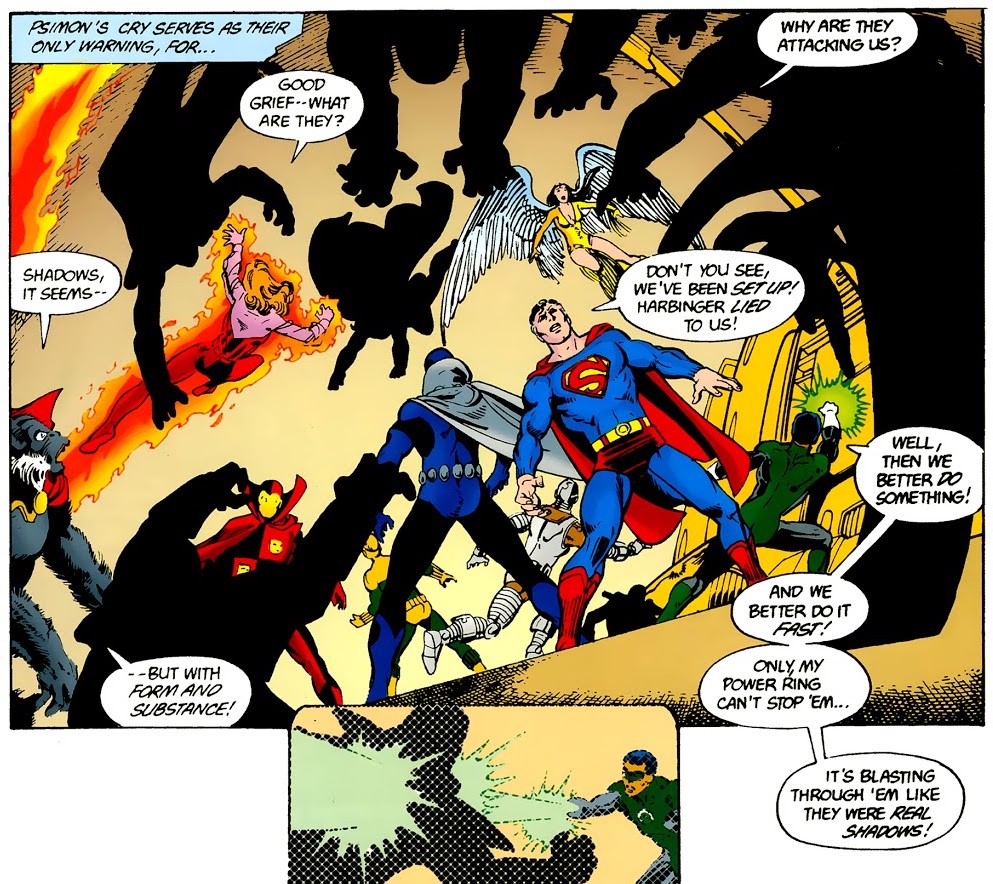
Shadow demons are creatures of living blackness, created by The Anti-Monitor from the elite among the Thunderers of Qward, the anti-matter universe’s version of Oa. In the original series the shadow demons appeared as black silhouettes, at first with a similar outline to that of The Monitor himself, and later with no discernible features at all. The shadow demons were a terrifying and seemingly unstoppable force, plunging the world into darkness during the series’s climax and injuring and claiming the lives of many of the heroes over the course of the story. The most recent final trailer for Crisis seemed to feature a quick glimpse of the shadow demons, so it’ll be interesting to see how much of a role they play in the event. Their threat, and the associated imagery, is an essential piece of Crisis.
2. Images of The Flash
Another iconic image from the original Crisis on Infinite Earths series is that of Barry Allen, The Flash, surrounded by energy, appearing before various heroes and villains. The image of the fastest man alive interrupted a showdown between The Joker and Batman in the pages of Crisis on Infinite Earths #2, though he seemed to be unable to communicate with the caped crusader before he disappeared.
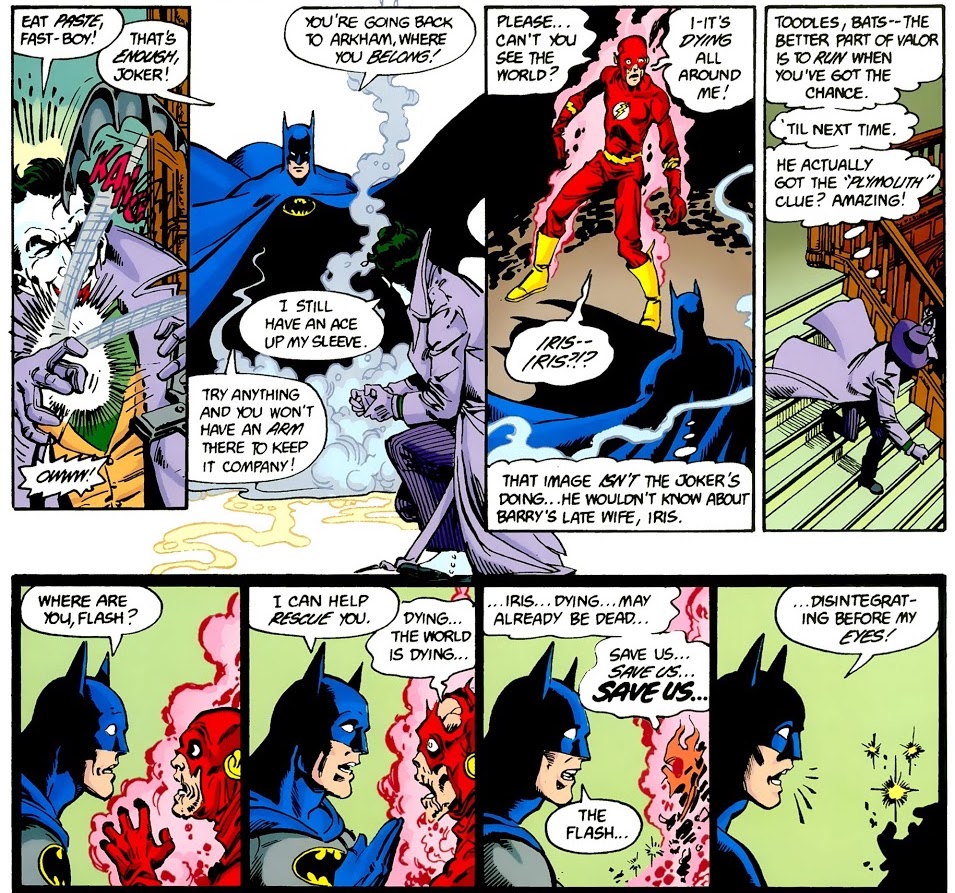
He next appeared in Crisis #3, returning to the 20th Century from the 30th after an anti-matter wave destroyed the future Central City. On a mission to get help, The Flash barely got two sentences out before he was pulled away, abducted by The Anti-Monitor. An image of The Flash also appeared before Kid Flash Wally West in Crisis #12, ultimately leading Wally to the empty costume left behind by Barry’s death. While Crisis #8 would reveal that this was The Flash traveling through time while destroying the Anti-Monitor’s anti-matter cannon, his appearances both before and after his death leant a horrific sense of foreboding to Crisis.
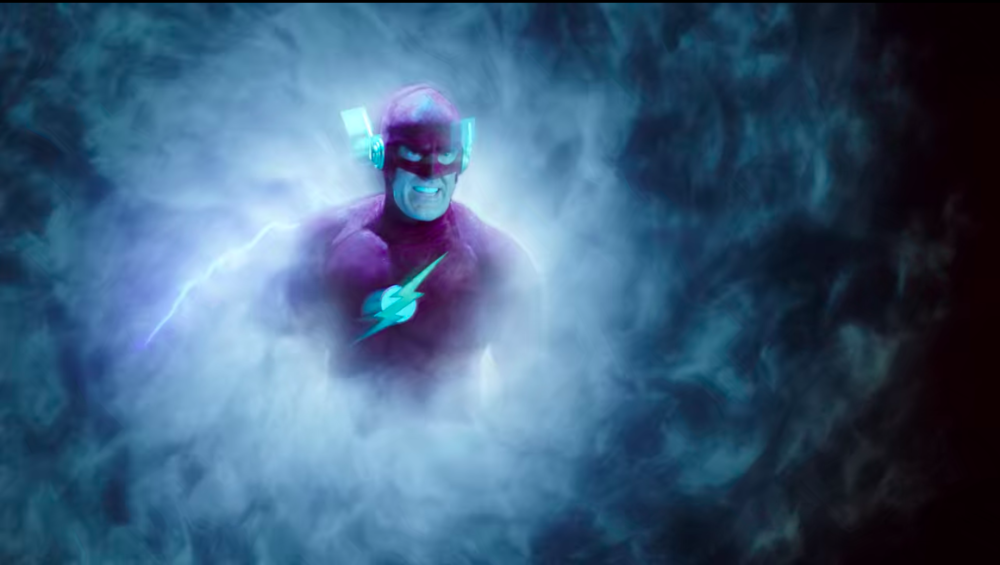
There’s precedent for a Flash appearing this way within the Arrowverse. During last year’s “Elseworlds” crossover, the Flash of Earth-90 (John Wesley Shipp) appeared at one point in a similar fashion, flickering in and out of view of the assembled heroes while attempting to travel from his world to Earth-1. His pronouncements, and eventual arrival on Earth-1, gave The Flash (Stephen Amell), Green Arrow (Grant Gustin), and Earth-38’s Supergirl (Melissa Benoist) a path forward in correcting the changes to Earth-1, and led to their ultimate first meeting with Mar Novu, aka The Monitor (LaMonica Garrett). Will history repeat itself?
3. The Monitor Creates a Hero
In addition to recruiting the heroes of the multiverse to his cause, The Monitor also took the liberty of creating one to aid in the battle against The Anti-Monitor. In Crisis on Infinite Earths #4, one of The Monitor’s final acts was to direct an energy blast towards a Japanese observatory. The blast strikes scientist Kimiyo Hoshi, imbuing her with the ability to absorb and redirect energy and transforming her into a new Doctor Light.
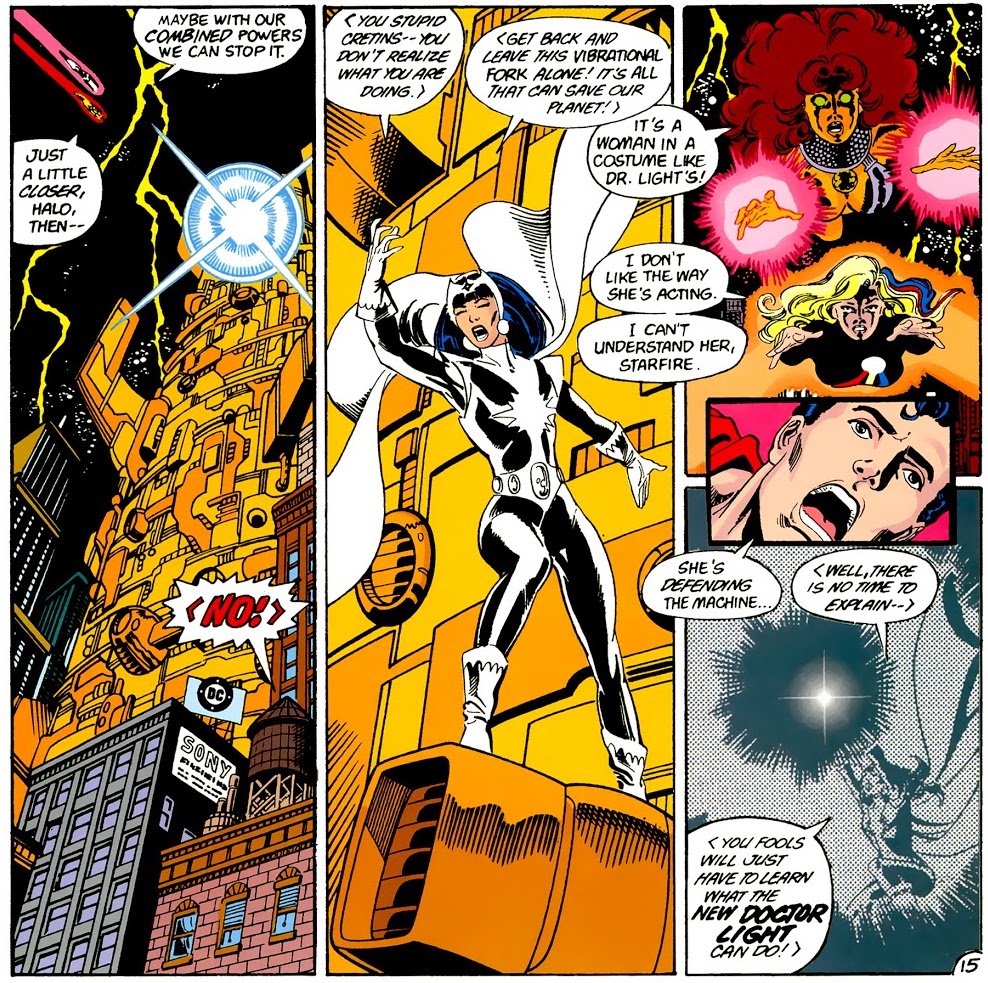
For much of the series, the new Doctor Light wondered why she’d been given these powers. Initially an arrogant know-it-all, Hoshi learned what heroism truly was after witnessing the ultimate sacrifice of Supergirl, who died in battle with The Anti-Monitor in order to give Doctor Light time to rescue Superman. Crisis on Infinite Earths #12 revealed the new Doctor Light’s true purpose as she absorbed the energy from a binary star from which The Anti-Monitor was drawing power, then redirected the energy into a powerful blast at The Anti-Monitor, seemingly destroying him.
Will The Monitor create any new heroes during the course of The CW’s Crisis? This week’s episode of Arrow ended with Lyla Michaels (Audrey Marie Anderson) transforming into Harbinger, but surely that’s not all Novu has in store for the event. With Osiric Chou slated to debut as Ryan Choi, is an All-New Atom in the Arrowverse’s future?
Speaking of Lyla becoming Harbinger…
4. Harbinger Kills The Monitor
Crisis on Infinite Earths #4 was an eventful issue for The Monitor. Not only did he turn Kimiyo Hoshi into Doctor Light; he also died at the hands of his closest confidant. Earlier in the series, while recruiting heroes from across the multiverse, Harbinger is attacked and infected by one of The Anti-Monitor’s shadow demons. The infection allows The Anti-Monitor to take control of Lyla, and ultimately to use her to murder The Monitor towards the end of Crisis #4.
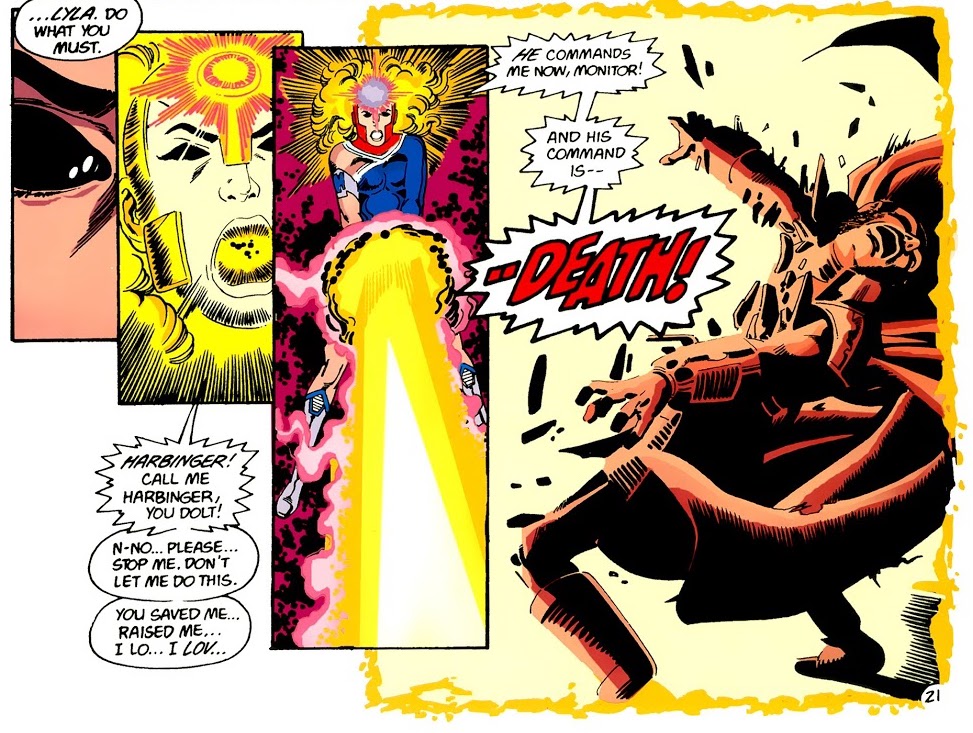
The Monitor had foreseen his death at Harbinger’s hands, though, and he planned accordingly so that the resulting cosmic energy released by his passing would spare Earths-1 and 2 from being merged and destroyed by The Anti-Monitor. Harbinger herself would eventually relinquish her powers as well, saving Earths-6, S, and X in the process. Those five Earths would provide the basis for the new world that resulted from the end of the series.
The Monitor’s death is a key moment in Crisis, and while it would be a shame to lose LaMonica Garrett in that role, it would be equally disappointing not to see that adapted, as I’m sure Audrey Marie Anderson would act the hell out of the anguish Lyla felt upon realizing what she’d done.
5. Battle at the Dawn of Time
As if the multiversal scope of Crisis on Infinite Earths wasn’t large enough, Wolfman & Pérez upped the ante in Crisis #10 when it was revealed by The Spectre that The Anti-Monitor had travelled through time, back to the beginning of all things, in order to remake the universe from the ground up in his image and likeness. Given who The Spectre works for, he had a problem with that, and assembled a combined team of heroes and villains to travel back to the dawn of time to stop The Anti-Monitor. At the same time a separate force of villains was sent elsewhere in time to stop the Oan scientist Krona from accidentally creating both the multiverse and the anti-matter universe.
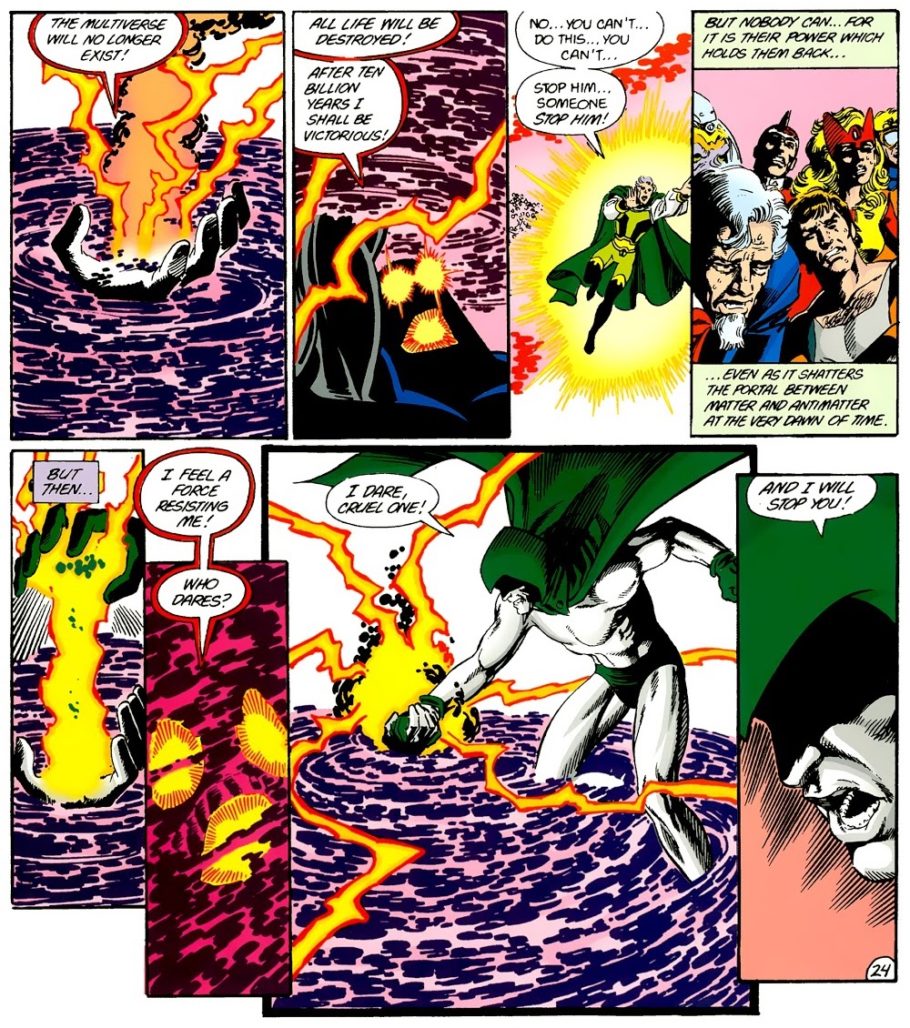
While the mission to stop Krona was a failure, the battle at the dawn of time between the heroes & villains and The Anti-Monitor was epic in scale, with The Spectre engaging directly with The Anti-Monitor as he attempted to create his own universe. The energy released by their encounter resulted in the destruction of the multiverse as it had existed prior, and the creation of something new.
This might be asking for a lot given the limitations of a television budget, but how great would it be to see the heroes and villains of the Arrowverse team up and travel to the beginning of time itself? We already know Jim Corrigan, aka The Spectre, is going to be appearing during Crisis, played by actor Stephen Lobo. For what other purpose could he be there?
6. A New Earth is Born
The tagline of Crisis on Infinite Earths was, “Worlds will live. Worlds will die. And the DC Universe will never be the same.” Following the battle at the dawn of time, that third part was especially true. The heroes who were present for the great battle found themselves back home, but not one that was exactly as they’d left it. Instead, they discovered that a new earth had been created, one that incorporated elements from the five remaining earths—1, 2, 6, S, and X.
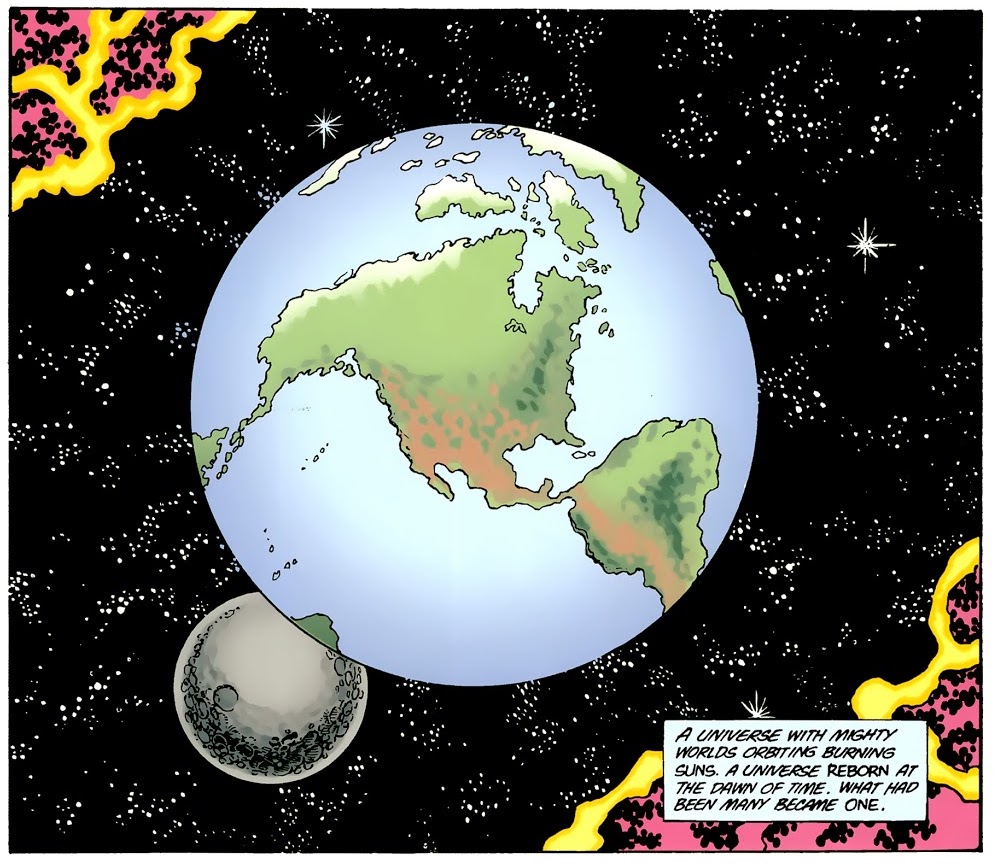
It’s been said that the reason DC went through with Crisis in the first place was to streamline their continuity, and that the multiple earths had become unwieldy. I’m not sure that the same is the case for the Arrowverse, though I will say it would be nice to have Supergirl on the same earth as everyone else so they don’t have to spend time during each annual crossover coming up with a way to bring her into the action. With Black Lightning also set to appear during the event, a consolidated New Earth would officially put all of The CW’s DC superhero shows in the same universe, which may make things easier to follow for casual fans who aren’t as steeped in the continuity of the shows.
7. Supergirl & The Flash Make the Ultimate Sacrifice
Perhaps the thing that makes the original Crisis on Infinite Earths continue to resonate, aside from the significant changes that it brought to the DC Universe, were the sacrifices made by a pair of major heroes in the process. Crisis #7 and 8 saw the deaths of Supergirl (Kara Zor-El) and The Flash (Barry Allen), respectively. Both died in about as heroic a manner as one could imagine, and the imagery associated with their final battles became instantly iconic.
In Crisis #7, a team of heroes mounted an assault on The Anti-Monitor’s citadel in the anti-matter universe. The Anti-Monitor was waiting for them, and the Superman of Earth-1 was the first to dive into battle against him while most of the other heroes dealt with shadow demons and what seemed to be the living rock of the citadel. Superman was nearly killed by The Anti-Monitor before Supergirl intervened, attacking the Anti-Monitor with a relentless assault of super-powered punches and other Kryptonian abilities.
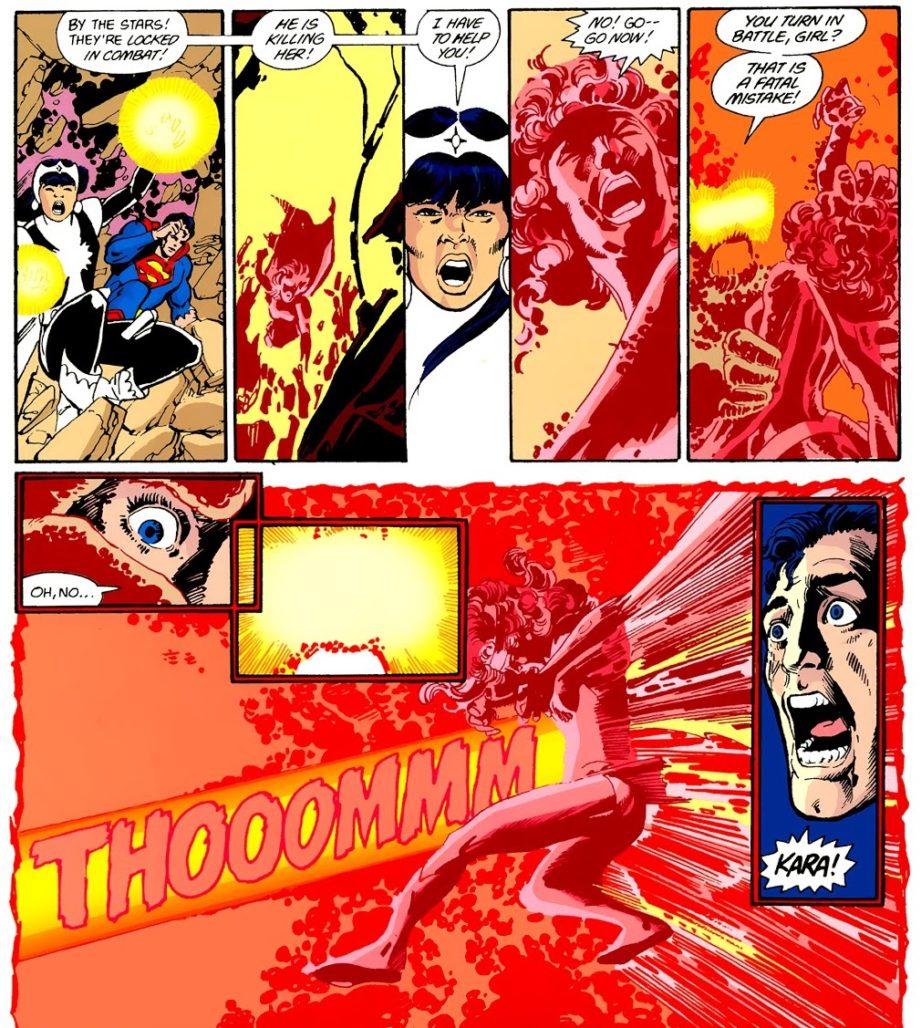
Destroying The Anti-Monitor’s outer shell released a flood of anti-matter, which weakened Supergirl, and when she turned momentarily to tell the new Doctor Light to escape with Superman, The Anti-Monitor unleashed a powerful burst of energy directly into her, which ultimately killed her. Supergirl’s selfless act caused irreparable damage to The Anti-Monitor, and acted as an example for the new Doctor Light of what it truly meant to be a hero.
Crisis #8 saw The Anti-Monitor regrouping from the attack, and completing work on his anti-matter cannon, which he would be able to used to destroy entire worlds. The Flash, who’d been held prisoner by The Anti-Monitor and the Psycho-Pirate since earlier in the series, finally managed to escape his captivity. Forcing the Psycho-Pirate to help him, The Flash turned the Thunderers of Qward against The Anti-Monitor, their lightning bolt blasts keeping him busy while The Flash set out to dismantle the anti-matter cannon.
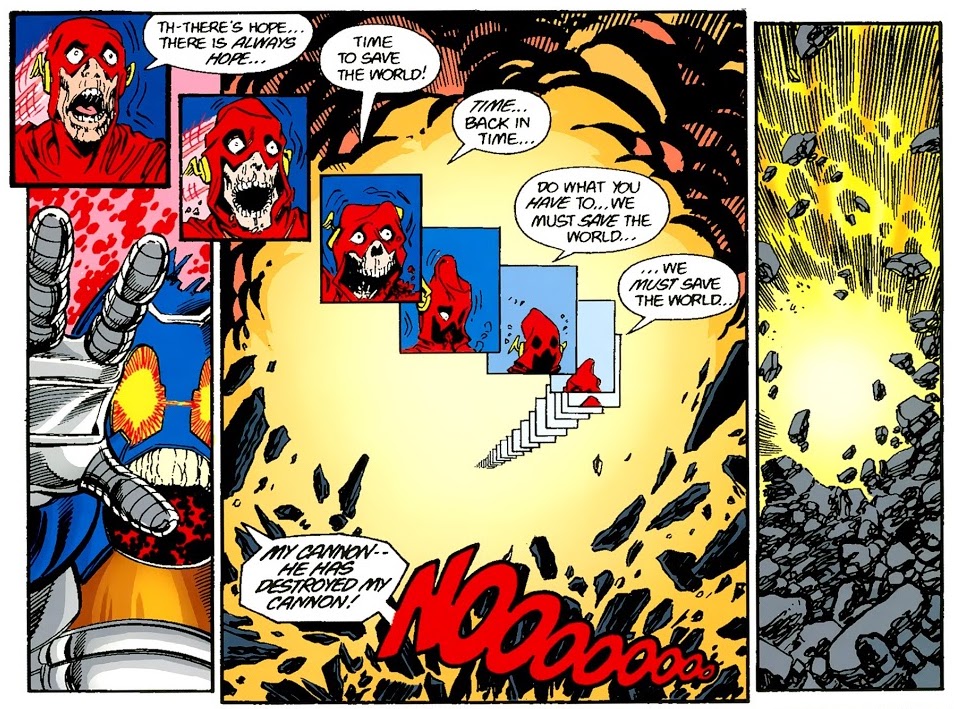
Upon getting a look at the weapon, The Flash realized that it would take all he had to destroy the machine. He ran circles around the cannon, his speed ever-increasing, his vibrations forcing anti-matter energy back into the weapon in the hopes of overloading it. His race led him to inadvertently travel through time, and resulted in his body disintegrating into nothingness, but the gambit was successful and the anti-matter cannon was destroyed. Barry Allen’s sacrifice stood as the defining moment for the character for decades, and was long held up as one of the best superhero deaths in comics history.
Will The Flash and Supergirl make similar sacrifices during The CW’s Crisis? The Monitor has decreed that, in order to save the universe, “The Flash must die,” but it seems highly unlikely that they would kill off Grant Gustin’s Barry Allen. Multiple Flashes are set to appear during the event, though, including John Wesley Shipp’s Earth-90 Flash. Could he be the one who goes to his eternal rest? And as for Supergirl’s death, she’s another headline of a CW series, so sending Melissa Benoist’s Kara Danvers to her death seems just as unlikely. But with multiple Supermen set to appear, including Brandon Routh as the Kingdom Come version and Tom Welling as the Clark Kent of Smallville, one of them could be the one who lays down their life in battle.
8. The First Hero Goes to His Reward
The climax of Crisis on Infinite Earths saw the newly-formed Earth pulled into the anti-matter universe, and the heroes confronted by an armada of shadow demons—which literally plunge the entire planet into darkness. The demons ravaged the world, killing dozens of heroes including Earth-2’s Green Arrow, Robin, and Huntress, who had all been present at the dawn of time and survived the merger of the worlds. Meanwhile, The Anti-Monitor drew power from the binary stars nearby, becoming more powerful than ever.
Finally the new Doctor Light drained one of the nearby stars, redirecting the energy into a blast that momentarily took down The Anti-Monitor in time for the heroes to return Earth to the positive matter universe through a portal created by Alex Luthor. As most of the heroes returned to their universe, The Anti-Monitor began to strike again, and Alex closed the portal, leaving he, the Superman of Earth-2, and the Superboy of Earth-Prime in the anti-matter universe to finish off the threat. With a final mighty blow, Kal-L plunged The Anti-Monitor’s essence into the nearby star, destroying him.
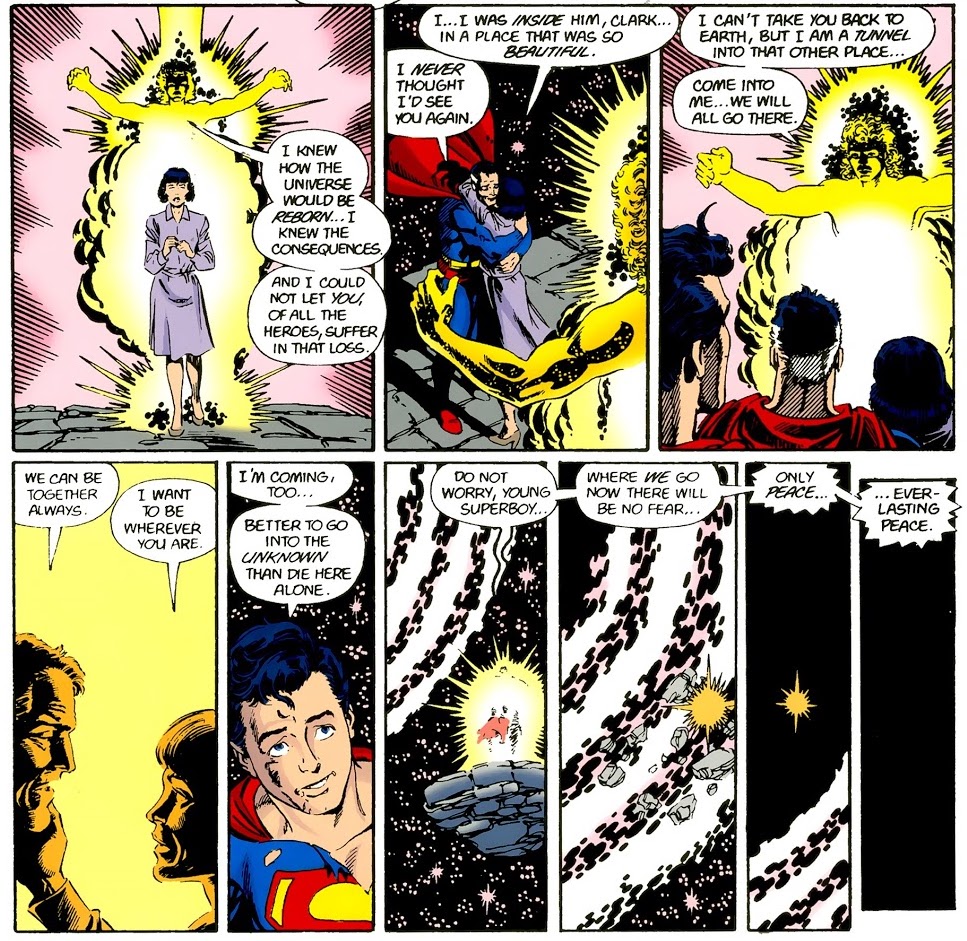
Left with no way back to the positive matter universe, Alex Luthor opened another portal to an unknown place, and revealed that he had rescued Kal-L’s wife, the Lois Lane of Earth-2, from the erasure of that world. Alex invited Superman, Lois, and Superboy back through the portal, and they exited the anti-matter universe, seemingly to live out the rest of their days in paradise. (Just ignore Infinite Crisis.)
The Superman of Earth-2 surviving the events of Crisis, which took the lives of basically every other Earth-2 doppelgänger who had survived, felt like a fitting way to end the series, considering he was the hero who kicked off the DC Universe as it had existed up until that point. With Oliver Queen apparently destined to die during the crossover, it would be equally fitting if he, as the hero who started and anchored the Arrowverse, actually survived the event and went to a similar reward as Kal-L. We already know, as of the season 7 finale of Arrow, that The Monitor is going to facilitate some sort of reunion between Oliver and his wife, Felicity (Emily Bett Rickards), so it seems likely that we’ll see something like that before the Crisis is over.
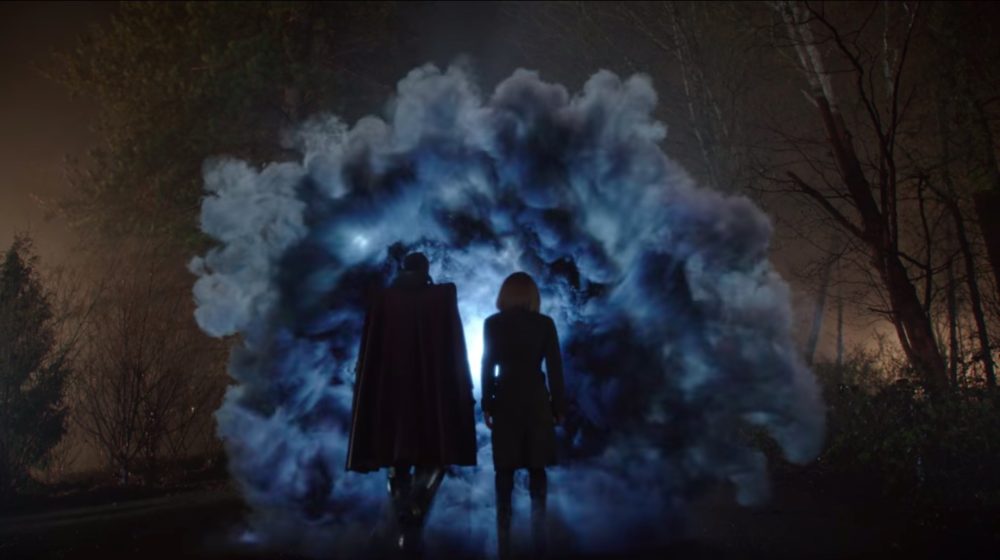
With so many iconic moments and elements, these are just a few of the things we’re hoping make the jump from comic to screen. What’re you looking forward to seeing? Hopefully we’ll see all of it and more when Crisis on Infinite Earths begins on Sunday night on The CW.


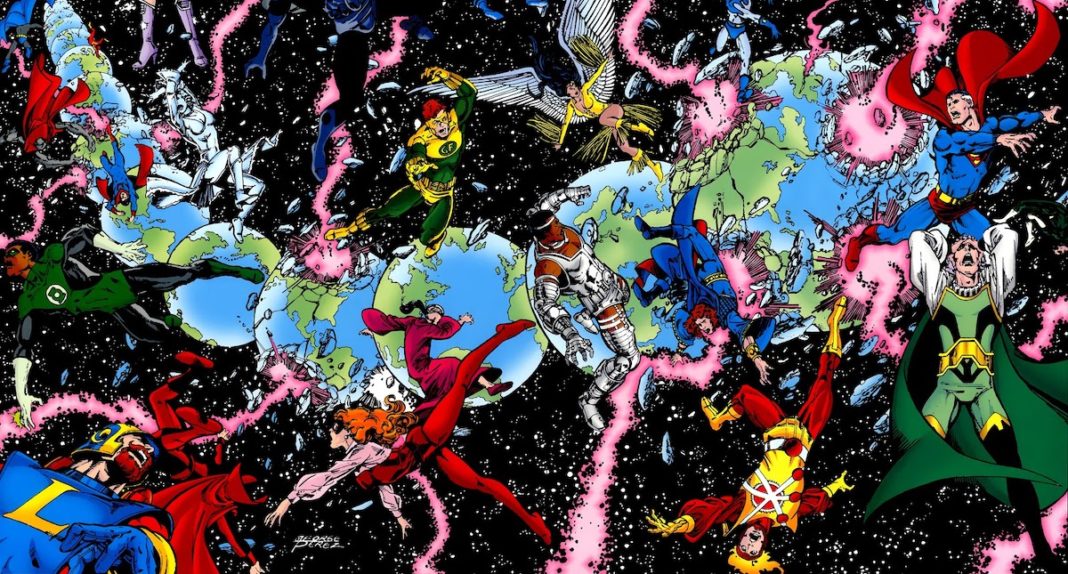
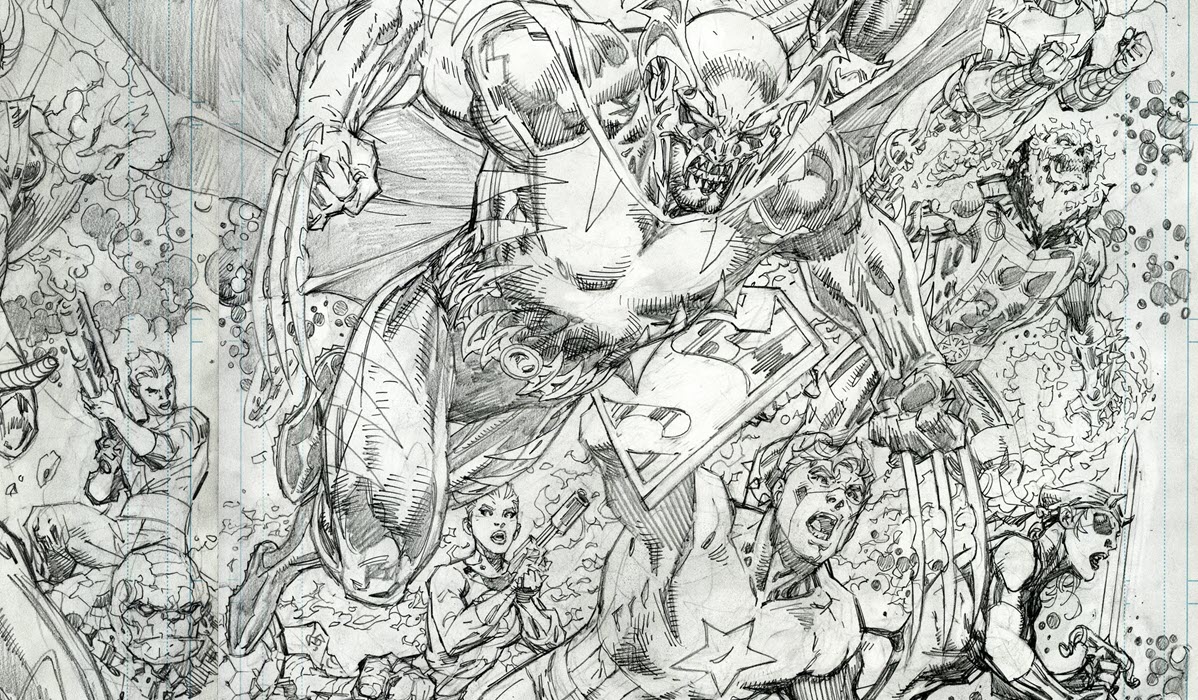
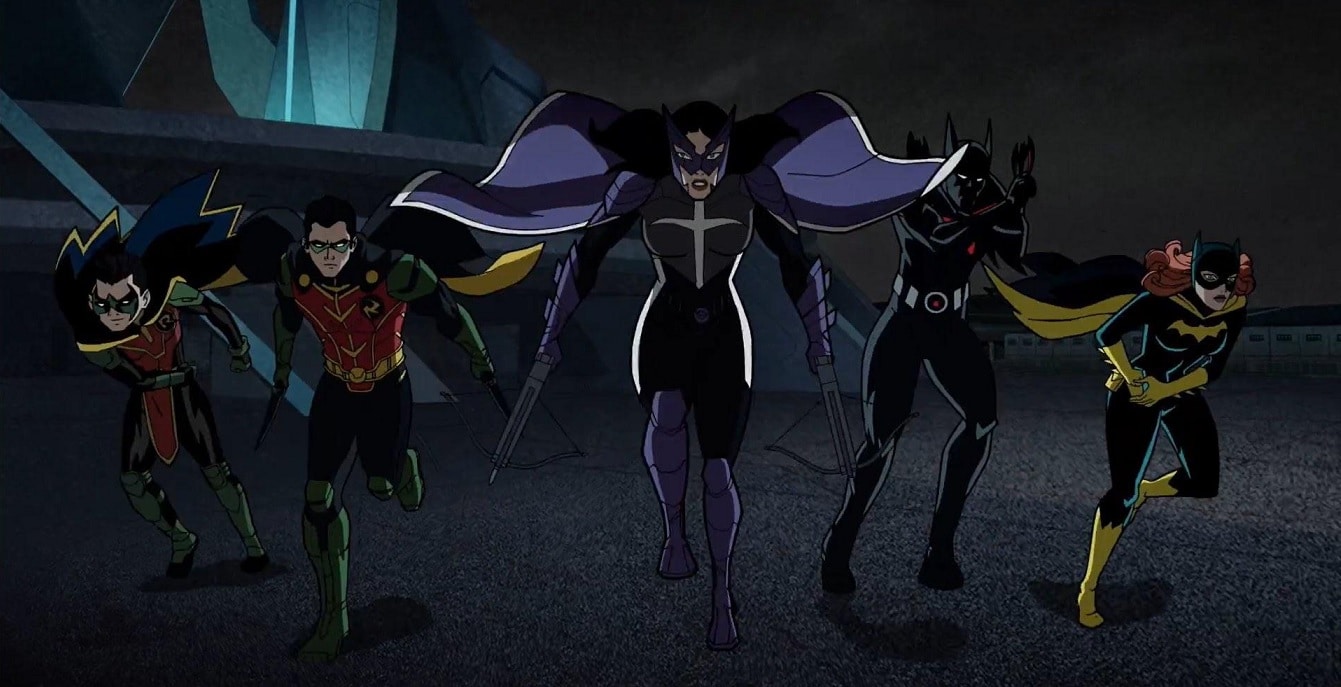



Yeah, with multiple versions of Kal-El, it seems likely that one of them will see his demise in place of Supergirl. However, maybe an alternate Supergirl (a Power Girl?) will take on that role.
Comments are closed.